Protecting Tropical Plants in the Winter
Our tropical plants have been happy outside over the summer, but cold weather is soon approaching. We need be prepared to bring our tender plants inside for a short freeze or even find them a bright spot indoors for the entire winter.
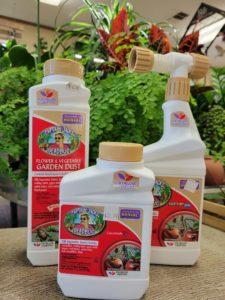
Before bringing them inside, check for fire ants in the soil. A soil drench with Captain Jack’s Deadbug Brew (with Spinosad) a few days before bringing them inside will kill any ants in the soil.

Next, check for any insect pests on the leaves. Look for spider mites, aphids, mealy bugs, white flies or thrips. If found, spray the plant thoroughly with All Seasons Horticultural Oil and let it dry before bringing inside. Spray when the temperatures are between 45°F and 85°F and the humidity is below 50% for best results.
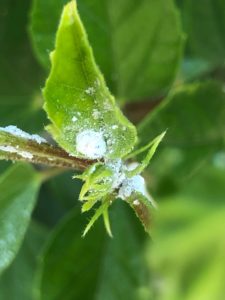
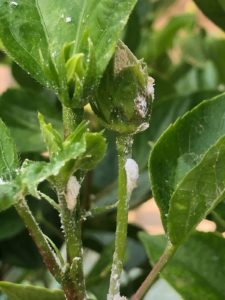
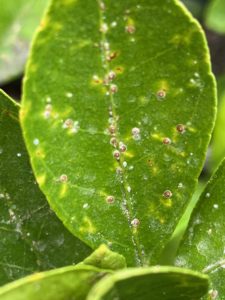
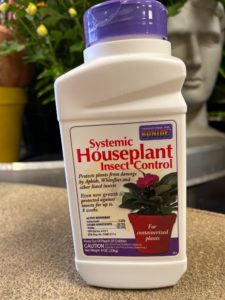
If you find any hard-to-kill pests such as mealy bugs, scale insects or white flies, you may want to apply Bonide Systemic Houseplant granules to the soil for long-term treatment, following instructions on the label. Mealy bugs may also be controlled by touching them with alcohol on a Q-tip. This will need to be repeated, as it only gets the ones you can see!
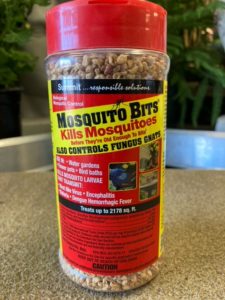
Fungus gnats, if found, may be controlled by using Mosquito Bits, following the directions on the label. Click HERE for more information.
If it is necessary to bring them in for the entire winter, locate them in the brightest spot possible and avoid heating vents blowing on them that will dry them out. Plant lights may also be used and should be set on timers for 14 hours a day.
Watering frequency is based on checking the soil and observing the plant. I like to mark my calendar when I water so that I can refer back to the frequency and know about how often to check the soil.
DO NOT USE SOFTENED WATER TO WATER YOUR PLANTS!
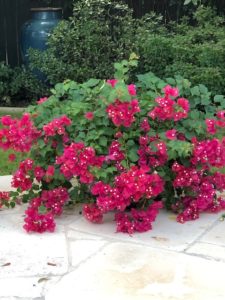
Bougainvillea will typically do better if left outside and protected when cold weather occurs. Of course, this depends entirely on the winter, as some winters in Central Texas can have extended cold periods and other winters have very few freezes. Bougainvillea do not like it much under 55°F but they will survive just fine if they are not subjected to freezing temperatures.
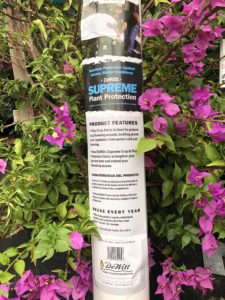
I will cover my Bougainvilleas with sheets, blankets, or frost cloth for a short, light freeze of 30°-32°F. Always anchor the cloth to the ground to capture the ground heat. Simply wrapping the top will suffice for a light frost to protect just the leaves but will not protect a plant for a 30°-32°F freeze. If the plants are tall, you can lay them down on the ground, then cover them. I have protected many tender plants with this method, first covering with blankets, then plastic tarps to hold in the heat. I used this method during the record freeze in February 2021 with the snow on top of the blankets and plastic tarp providing even more insulation, and my Bougainvilleas, large Almond Verbena, and Citrus plants came through it ALIVE!
DO NOT PLACE PLASTIC DIRECTLY ON THE PLANTS!
If we are due for a sustained freeze, you may need to cut your Bougainvillea back to a reasonable size to bring them into the house. I always advise to plant tropicals in plastic pots and set them down into the decorative pot so that they may be more easily moved inside in the winter. If you do need to bring them inside for an extended period of time, place them in a bright window with as much light as possible. Watering will be required when the soil is dry, and the pot feels light in weight. It is best to take the plant outside to water it thoroughly and allow it to drain before bringing it back inside.
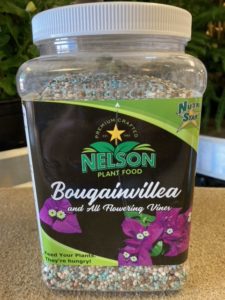
Do not fertilize during the winter. Save the fertilizer for the spring when the chance of frost is past and new growth has begun. We recommend Nelson Plant Food’s Bougainvillea Fertilizer with timed-release granules, applied monthly throughout the growing season.
A root-bound plant may need to be transplanted in the spring to a container that is 4”-6” larger. This is also the time to shape the plant, or to prune it back hard if it has grown too large and woody.
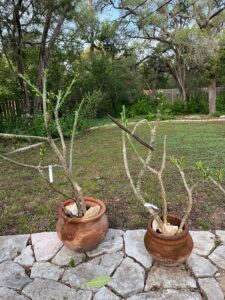
Plumeria may be moved inside with the leaves on (they will likely fall off by themselves) or the leaves may be trimmed off prior to bringing inside. For more specific instructions, consult our Plumeria blog HERE.

Mandevillea may be overwintered in the pot much the same as Bougainvillea. They will do best in temperatures over 50°F and may also be cut back and brought inside to a sunny window for the winter.
Check for mealy bugs or any pests and follow the directions above for treatment.
Water when the soil approaches dryness, but do not allow the soil to become bone dry. The tuberous roots act as water storage, so keep in mind that you do not need to keep the soil constantly moist. It is also possible to allow the plant to go dormant and place in temperatures above 50°F, watering only often enough to keep it from going bone dry. In the spring, move it outside when the temperatures are consistently above 50°F and fertilize with Nelson Plant Food’s Bougainvillea (and tropical vine) fertilizer monthly during the growing season.
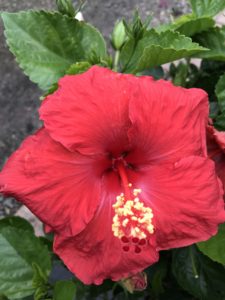 Tropical Hibiscus may also be brought inside for the winter. First, check for any pests such as mealy bugs, white flies, or aphids. Check the soil for fire ants. Follow the pest control methods above if any are found.
Tropical Hibiscus may also be brought inside for the winter. First, check for any pests such as mealy bugs, white flies, or aphids. Check the soil for fire ants. Follow the pest control methods above if any are found.
Bring them in to a sunny window with as much light as possible before the temperatures are consistently in the 50’s. (They should also be in plastic pots for ease of transfer.) They may be pruned to shape and control size at this time. It is not unusual for them to drop yellow leaves after they are brought inside. Take them outside to water when the top few inches of the soil have dried. Frequency will depend on several variables, including how root-bound they are. Be sure to allow them to drain thoroughly before bringing back inside and do not allow them to sit in a saucer of water at any time. You may prune again to shape before bringing them out in the spring when temperatures are consistently above 55°F. Transplanting root-bound plants to a container 4”-6” larger should take place at this time.
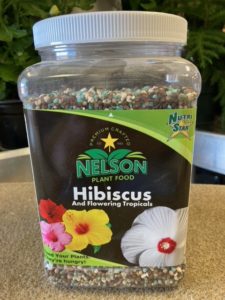
Begin fertilizing with Nelson Plant Food’s Hibiscus Fertilizer granules when new growth appears and repeat monthly throughout the growing season.
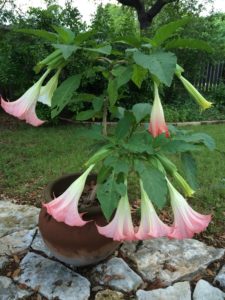
Brugmansia may be protected in the same way as Bougainvillea, or you may easily root 6”-8” cuttings in soil or water to start again next year. Leave the cutting out for a few days to callus over before rooting. Pot them in 1 gallon pots when the roots are 6″ long. Keep the plants in bright light throughout the winter, watering when the soil approaches dryness.

Sweet Potato Vines do not like temperatures at 40°F or below. They can be easily overwintered by protecting the tubers from freezing during the winter. Yes, they form tubers just like the sweet potatoes that we eat. You can actually eat the tubers of the ornamental Sweet Potato, but it will not taste as good as the ones grown to eat.
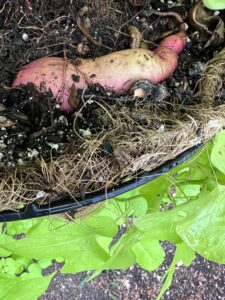
If the tubers are in a pot that is easily brought into the garage or house, simply stop watering and the plant will go dormant. You can leave the pot outside if it is not going to freeze, then bring it in for the freeze. If they are planted in the ground, water the ground well before a freeze and be sure to mulch the area to keep the tubers warm.
You can also remove the tubers from the pot to store them. Keep them in perlite in a cool dry spot. Be careful not to nick or injure the tuber when you remove it or disease may be a problem.
When danger of freeze is past in the spring, and temperatures are consistently over 55°F, you can bring your pots back outside, water and lightly fertilize and wait for new growth. When it happens, it will happen fast!

Succulents that are grown in pots are usually not winter hardy in our area and will need to be protected from freezes. Some species, such as Sempervivum, Sedum and some Euphorbia are more winter hardy and could be left outside except for a hard freeze. It is important to identify which succulents you have and to know their hardiness Zone. Since we are in Zone 8b, any plant with a zone higher than 8b will need protection from freezes. Some species are also sensitive to low non-freezing temperatures, so it is pretty important to identify your plants if you can.
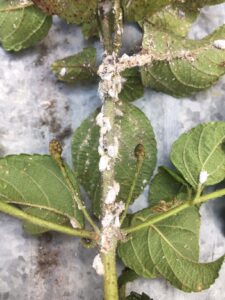
Check for pests such as mealy bugs before they are brought indoors. Alcohol on a Q-tip, touched to a mealy bug, is a good control, but must be repeated regularly. Systemic insecticides work slowly in succulents, especially during the winter months, so manual removal is preferable.
Clean any dead leaves from the plants, as these may hold moisture and encourage disease when brought inside.
If you have a sunny window, you may overwinter your less-hardy succulents inside. They should receive at least 8 hours of sunlight if possible. Bring them in before the temperatures are consistently 45°F or below. Watering will be quite infrequent. Most species may be allowed to dry and remain dry for some time before watering is necessary. Water only often enough to keep them from shriveling, but be sure to water thoroughly when you do, and let the water drain freely.
If you lose some of the plants over the winter, replace and refresh with new ones. I am constantly taking cuttings and adding to my succulent bowls as some plants fail to thrive. By spring it will look good as new.
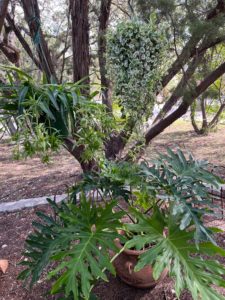
Houseplants, in general, may be treated the same as the other tropical plants described above. Check for insects, clean off any dead or damaged leaves and find a bright spot without drafts from heating vents or other sources.
Watering frequency will depend on the plant species requirements, how rootbound the plant is, temperature and humidity. Lifting the pot to feel the weight of the pot can give good insight as to the water retained in the pot. Feel the soil with your finger at least 4” deep, and even check the moisture level in the drainage hole(s) for plants that need to dry completely between waterings.
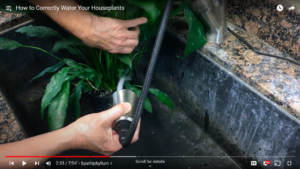
Plants should be taken to the sink or outside to water thoroughly when they need it, and allowed to drain before replacing them in their decorative pot or saucer. Click HERE to watch the video on watering houseplants.
If they need to be pruned to fit into the house, it is alright to do it now, but save any heavy pruning for spring.
If the plant is rootbound, it will require more frequent watering, and should be transplanted in the spring to a pot about 4”-6” larger. Be sure to plant into a plastic pot that sets into the decorative pot so that it may be easily managed in the winter months.

Citrus may be overwintered much the same as any other tropical plant. They really are not reliable cold hardy planted in the ground north of San Antonio, and are less cold hardy in pots. Calamondin oranges are perhaps the most winter hardy, with Arctic Frost Satsuma, Improved Meyer Lemon following, and the Lime trees being the least winter hardy.

Check for pests and treat with Spinosad or All Season’s Oil before bringing them inside. Follow instructions on the label for best results.
DO NOT USE SYSTEMIC INSECTICIDES ON FRUIT TREES!
Locate them in the brightest possible location inside. Since citrus bloom in late winter, they will likely bloom inside if in a good location. The blossoms are self-fruitful and do not need bees to pollinate them.
Locate them away from drafts or heater vents.
Take them outside to water when the soil is approaching dryness, but never allow them to get bone dry. Feel the weight of the pot and feel the soil with your finger at least 4” deep.
If left outside for the winter, cover with sheets, blankets or frost cloth for a light frost.
If a hard freeze is expected you can lay the trees down and cover with sheets, blankets or frost cloth, then a plastic tarp to hold in the heat. If you leave them standing, be sure to anchor the covering to the ground to capture the ground heat. For an extended freeze, moving inside to an area above freezing would be preferred.
Repotting should usually only take place in the spring, and only if they are rootbound. They tend to be quite large in what seems like a small pot, so always check the root system before transplanting. Make a 4”-6” jump in pot size, depending on the size of the pot that they are in. The bigger the pot, the bigger the jump can be, but never make a giant jump.
Obviously, I cannot cover all the plants that need winter protection, nor all the methods of protection available. Greenhouses are the BEST option, but even they have issues with air circulation and disease issues that need to be addressed. Not to mention heaters not working during power outages!
I hope that this has helped a bit towards getting your plants ready for winter, and having a plan for doing so!

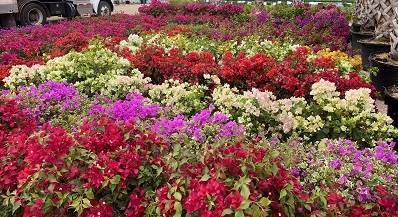

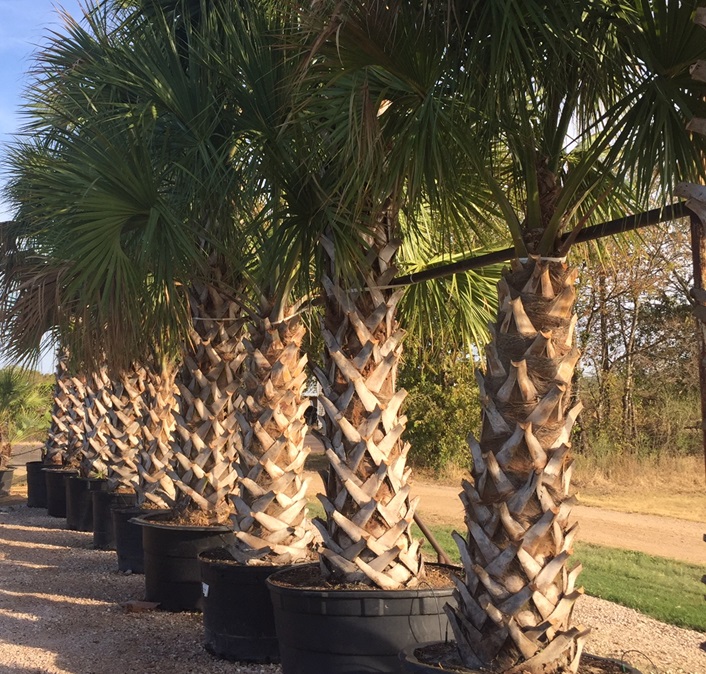
TY SO MUCH!
We have an infestation of little beetles o our fall okra plants and they are spreading to other plants now. They are about the size & shape of a ladybug but are black with yellow spots.
What are these ?
Thank you
Hi Jon. It would be helpful to have a photo of the beetle. You can send it to [email protected] Flea beetles are tiny and black and have been known to infest okra. They leave tiny holes in the leaves, and they jump like fleas. A spotted cucumber beetle is more elongated and it is yellow/green with black spots and it has known to infest okra as well. Without a photo, I’m afraid that I cannot give an identification.
Thank you so much for the wealth of info in these articles!! Much appreciated 😃
Thank you so much for the wealth of info in these articles!! Much appreciated 😃